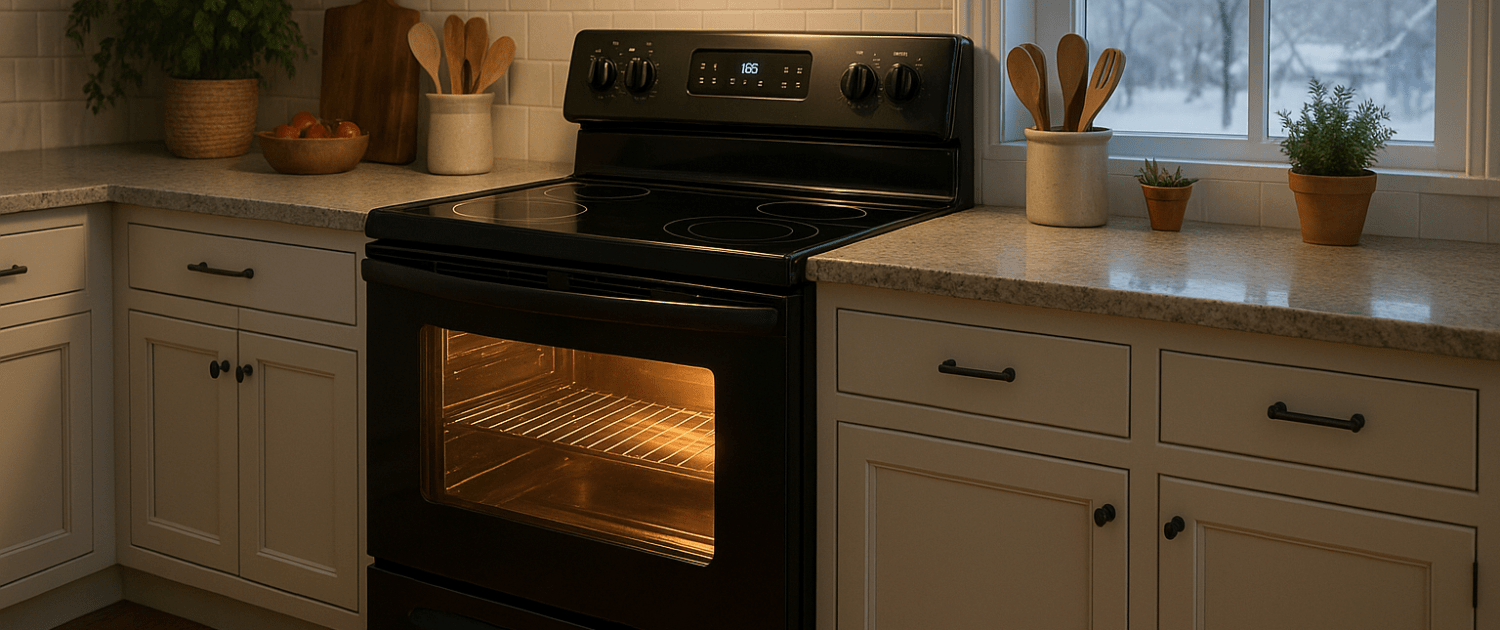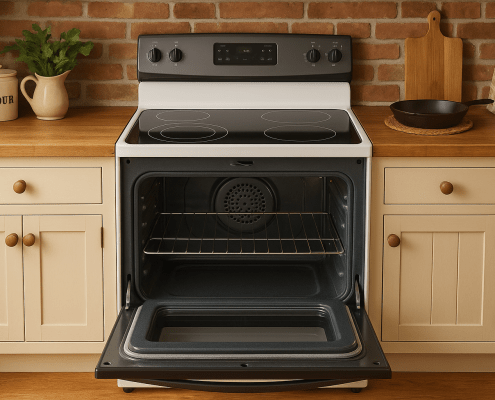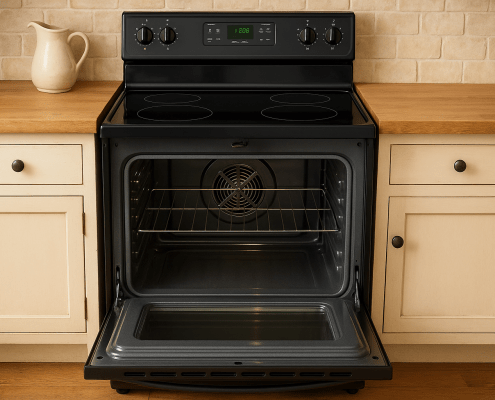Samsung Oven Not Heating? Try These DIY Fixes For Your Range
Steven E / Wednesday May 28, 2025
When your Samsung gas or electric range oven stops heating, a faulty component is often the cause. We’ll walk you through simple troubleshooting steps to identify the problem and what may need to be replaced.
If you need any replacement parts for your Samsung range, you can enter your model number at AppliancePartsPros.com to order them. Most orders arrive in just two business days, and we have thousands of free guides to show you how to install your new parts.
The information in this article may not apply to your specific appliance model. We recommend consulting your manufacturer’s documentation or contact us with any questions.
What you need
- Multimeter
- Phillips head screwdriver
- Flat-head screwdriver
The specific tools required may vary depending on the model of your appliance and the type of fasteners used on it.
Safety precautions
Your safety should always be the top priority when performing any appliance repair.
- Always power off and unplug your appliance or switch off the circuit breaker before you attempt any maintenance or replacement work. This keeps you safe by eliminating any risk of electric shock.
- If the appliance has recently been used, give it plenty of time to cool down before working on it.
- Shut off the gas supply to prevent any gas leaks while you work.
- Take your time while working to prevent accidents and personal injuries. Rushing is the enemy of precision.
- Work in a well-lit area so you can see and access appliance parts.
- Keep your workspace free of clutter and other obstacles. Keep children and pets away from the work area.
- Never work on internal parts with wet hands. Make sure the work area is completely dry.
- Check the user manual to see if there are specific installation or safety instructions related to your appliance or replacement part.
- Be gentle when handling or removing parts. Excessive force might damage the appliance or cause personal injury.
- Wear insulated work gloves to protect your hands from sharp metal parts and debris.
- When working with wires, avoid touching any exposed wires or terminals. If you need to touch a wire, use a non-conductive tool or wear insulating gloves to prevent electrical shock.
- Always take photos or make a note of wiring terminals or other connections before disconnecting them to make reassembly easier.
- Don’t test live voltage with a multimeter if you’re unfamiliar with how to prevent short-circuiting.
- Consider wearing safety glasses and/or a dust mask when working with chemicals, dust or a large amount of debris to prevent irritation or injury.
How to troubleshoot a Samsung range that won’t heat
Here are the steps to diagnose and fix a Samsung range that is not heating properly. Follow this process to check key components and replace any faulty parts.
Step 1. Check the high-limit thermostat
- Disconnect power by unplugging the power cord or turning off the circuit breaker.
- Pull the range out and remove the Phillips head screws securing the back panel.
- Locate the main control board and find the CN101 connector.
- Remove the CN101 connector and set a multimeter to continuity mode.
- Test for continuity between L1 at the main terminal block and the black wire connector that was removed.
- If there is continuity, the thermostat is functional. If not, the thermostat is open and must be replaced.
Step 2. Test the oven control board
LIVE VOLTAGE WARNING: For this test, the range needs to be plugged in and powered on. Please be very careful to protect yourself from electric shock, which has the potential to cause serious injuries. Don’t ever test live voltage if you’re uncomfortable using a multimeter.
- If the high-limit thermostat is functional but the oven still doesn’t heat, check the main control board.
- Remove the rear panel using a Phillips head screwdriver to access the main control.
- Plug in the range and turn it on.
- Set the multimeter to AC voltage mode.
- Turn the oven on to bake mode.
- Place one multimeter lead on the T501 terminal and the other on the T505 terminal.
- A proper reading should be 240 VAC.
- If the voltage is incorrect, replace the control board. If the voltage is correct, proceed to test the bake element.
Step 3. Test the bake element
- If the control board provides the correct voltage but the oven still does not heat, test the bake element.
- Remove the Phillips head screws securing the back panel to access the bake element.
- The bake element is located at the bottom of the oven and is hidden from view.
- Disconnect one of the wires from the element.
- Set the multimeter to resistance mode (Ω), which is indicated by a symbol resembling an upside-down horseshoe.
NOTE: Generally, for every 1 degree in temperature difference, 2 Ohms could be added or subtracted. If the temperature in your home is cooler, resistance would be subtracted.
- Measure the resistance across both terminals of the bake element.
- A normal reading should be between 17 and 20 ohms.
- If the reading is significantly different or displays “OL” (open line), the bake element is faulty and must be replaced.
Step 4. Replace the bake element
- If the bake element is defective based on the resistance test, replace it with a new one.
- Disconnect the faulty element completely.
- Install the new element in the same position.
- Secure it with screws and reconnect the wires.
- Reassemble the back panel and restore power to the range.
- Test the oven by turning it on to confirm it heats properly.
Still need assistance?
Thank you for reading! We hope this guide helped you get your Samsung range working again.
If you have any other appliance repair needs or projects, don’t hesitate to explore our other troubleshooting guides and videos.
If you need replacement parts or some extra help with ordering them, grab your model number and head over to AppliancePartsPros.com, where you can chat with a pro, read our DIY blog and more.
Don’t forget to subscribe to us on YouTube and follow us on Facebook, Twitter and Instagram!
With nearly a decade of experience in providing top-notch customer service regarding appliance parts and repair, Steven enjoys sharing practical advice, troubleshooting tips, and interesting information to help readers stay informed.





